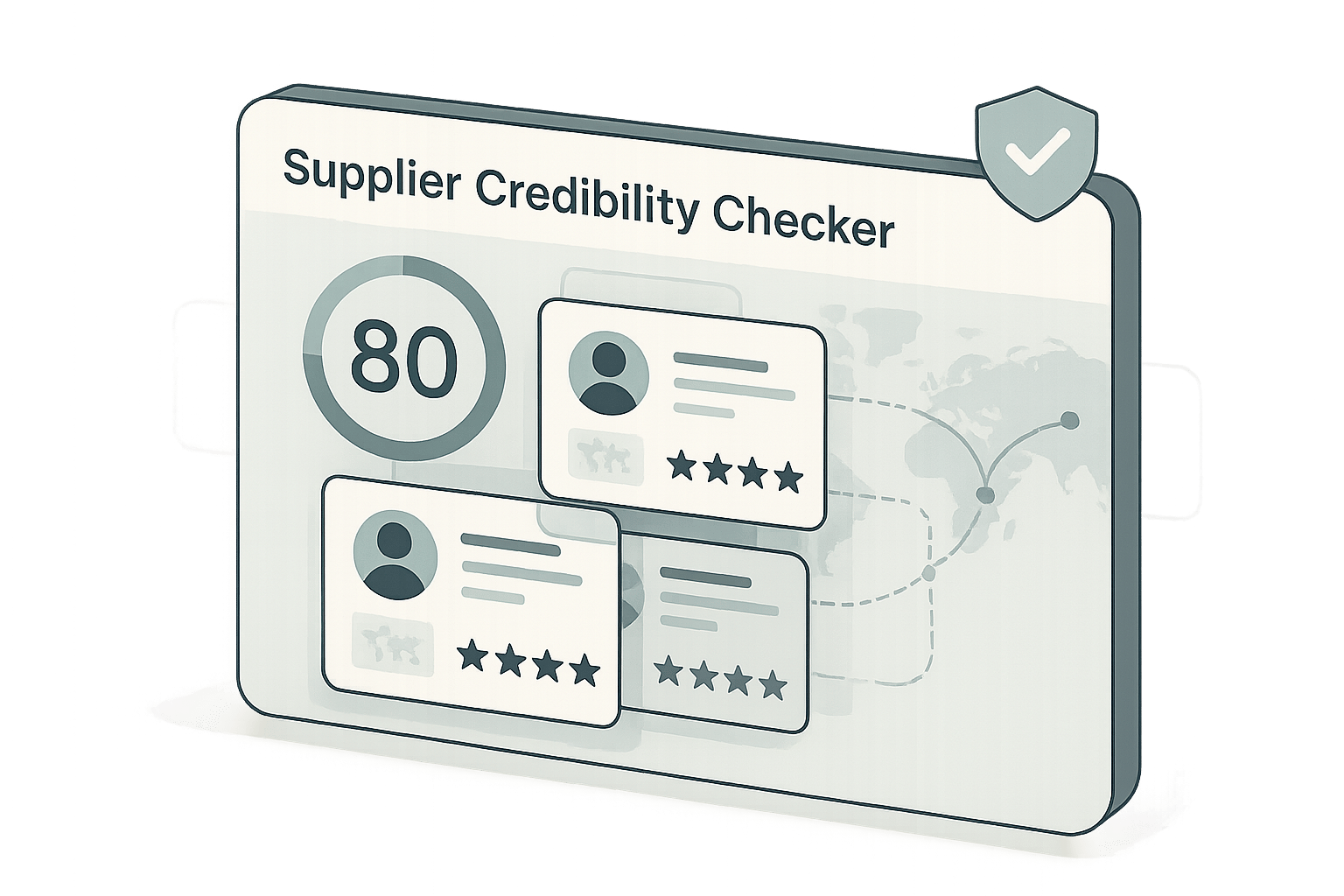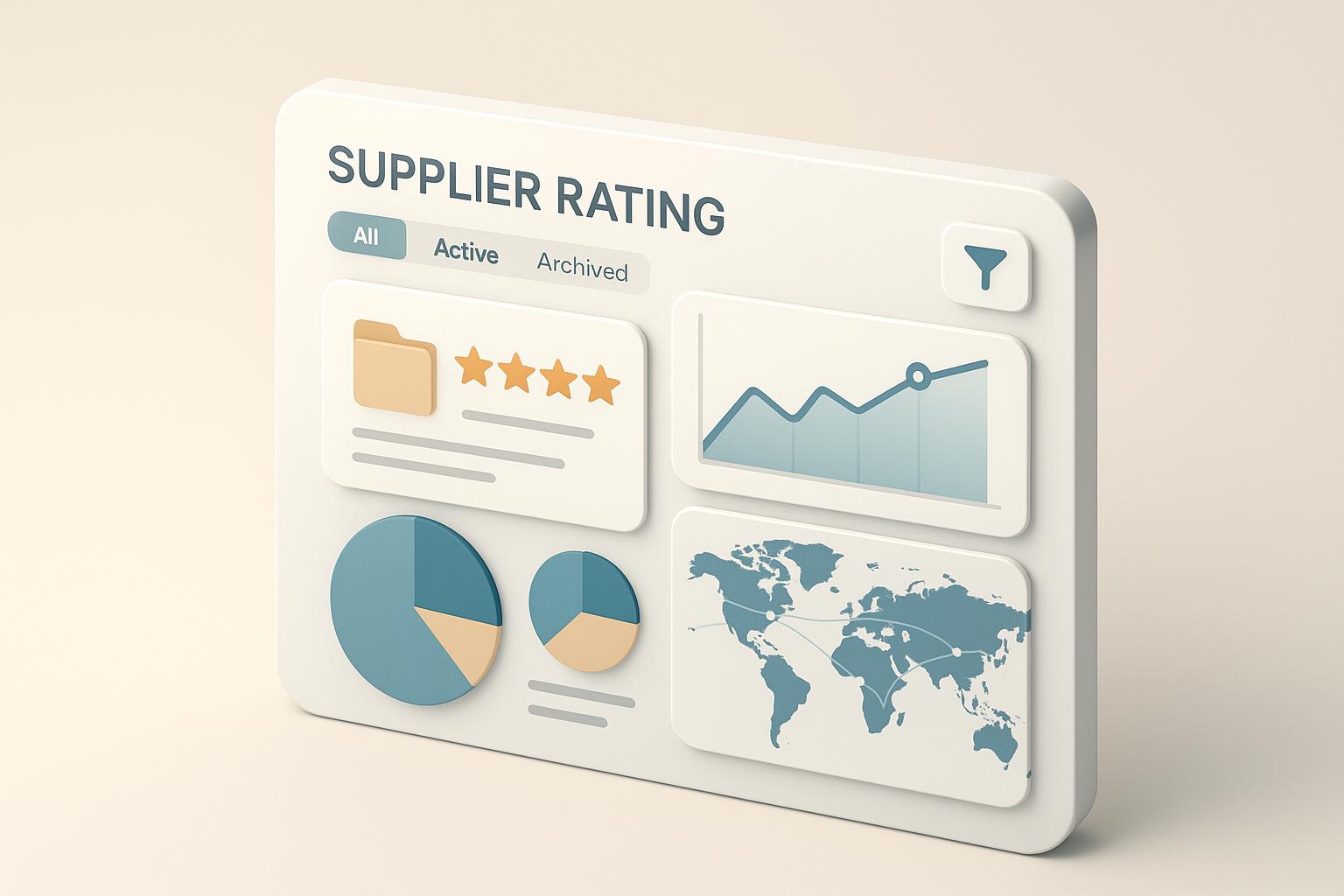Achieving carbon-neutral supply chains is no longer optional for businesses operating globally. This article examines how Jinhuai Q Enterprises, a Chinese manufacturer, successfully reduced emissions across its operations. Key strategies included:
- Switching to green logistics: Replacing diesel trucks with electric and hydrogen-powered vehicles, optimizing delivery routes, and using eco-friendly packaging.
- Using digital tools: Implementing AI and IoT systems for real-time emissions tracking and energy efficiency improvements.
- Adopting circular practices: Recycling production waste, launching take-back programs, and reusing materials to lower emissions and costs.
The company overcame challenges like high costs, supplier misalignment, and limited data transparency by leveraging technology, government incentives, and collaborative contracts. The result? Lower emissions, operational savings, and compliance with stricter global regulations. These lessons provide a clear path for businesses aiming to reduce their carbon footprint while staying competitive.
How to Tackle Scope 3 Emissions and Build Resilient Supply Chains
How to Achieve Carbon Neutrality: A Practical Approach
Jinhuai Q Enterprises adopted a comprehensive strategy to make carbon neutrality an achievable and practical goal for businesses.
Green Logistics and Transportation
To tackle emissions, the company overhauled its logistics operations. Diesel trucks were replaced with electric and hydrogen-powered vehicles, and investments were made in EV charging stations and hydrogen fueling networks. These changes not only reduced reliance on fossil fuels but also modernized their transportation infrastructure.
On top of that, advanced algorithms were used to optimize delivery routes. This reduced travel distances, cut down on fuel consumption, and minimized vehicle wear - all while maintaining high service standards. Packaging waste was also addressed by switching to reusable containers for bulk shipments and biodegradable materials for consumer packaging. This shift not only reduced waste but also helped lower shipping costs.
Digital Tools for Emissions Tracking
Jinhuai Q Enterprises turned to technology to monitor and reduce emissions. AI-powered analytics and IoT sensors were deployed for real-time tracking of energy use and equipment performance. These tools collected data that helped identify inefficiencies, such as higher energy consumption during specific production shifts. With this insight, the company made targeted adjustments, leading to significant energy and cost savings.
The real-time tracking system also allowed managers to respond quickly to unexpected spikes in emissions, addressing problems before they grew larger. Additionally, the detailed reports generated by the digital platform simplified compliance with China's increasingly stringent environmental regulations. This robust tracking system laid the groundwork for further advancements in resource recovery.
Circular Supply Chain Practices
Jinhuai Q Enterprises embraced circular supply chain principles to transform waste into valuable resources. Recycling programs were introduced to recover materials during production. Systems were established to capture and reuse waste like metal shavings, plastic scraps, and excess packaging.
The company also launched take-back programs for end-of-life products. Returned items were either refurbished for resale or broken down to recover materials, creating new revenue streams while reducing the environmental impact of disposal.
Challenges in Building Carbon-Neutral Supply Chains
Jinhuai Q Enterprises faced several hurdles on its path to carbon neutrality, shedding light on the complexities involved in transforming traditional supply chains into more sustainable systems.
Managing Complex Supply Chains and Stakeholder Alignment
One of the main challenges was the lack of technological integration among upstream and downstream partners, which made it difficult to coordinate sustainability efforts across the board. This disconnect created communication gaps and led to inconsistent adoption of green practices across suppliers and regions.
Aligning the diverse interests of suppliers proved equally tough. Suppliers differed in their technical capabilities and willingness to invest in greener practices. To address this, the company introduced collaborative contracts and allocated resources strategically to balance economic goals with environmental priorities. They also utilized digital platforms to enable real-time data sharing and set up shared sustainability targets with clear incentives for suppliers. This approach not only built trust but also encouraged collective action toward reducing carbon emissions. However, these efforts added another layer of financial uncertainty, particularly when adopting new green technologies.
Financial Barriers and Return on Investment
The high initial costs of implementing green technologies posed another significant obstacle, compounded by uncertainties around return on investment (ROI) and limited availability of green financing options. Government incentives and grants became essential in mitigating these costs. Jinhuai Q Enterprises also implemented energy efficiency measures and waste reduction programs, which helped improve the financial feasibility of their carbon-neutral initiatives.
To further support their efforts, the company leveraged policy-driven benefits such as tax breaks, subsidies, and preferential loans, enabling them to test and scale sustainable solutions. By tracking both quantitative metrics - like reductions in greenhouse gas emissions - and qualitative benefits, such as improved brand reputation and compliance with regulations, the company made a strong case for ROI.
Data Transparency and Supplier Accountability
Another major challenge was ensuring accurate data sharing across multiple tiers of suppliers. Inconsistent reporting standards, limited real-time visibility, and difficulties in verifying compliance created significant obstacles in tracking emissions. Many suppliers lacked the necessary digital infrastructure and expertise to provide reliable emissions data, raising concerns about accountability and the potential for greenwashing.
To tackle these issues, Jinhuai Q Enterprises adopted digital tracking tools. They also explored platforms like ForthSource, which aggregate supplier data and use proprietary scoring systems based on factors such as credibility, pricing, and legal records. These tools allowed sourcing managers to identify reliable, low-carbon suppliers more efficiently while minimizing risks and ensuring compliance with sustainability standards.
"We cut sourcing time by 40% using ForthSource's scoring system. Game changer."
– Alex Chan, Supply Lead, Luma Goods
This data-driven strategy strengthened accountability across the supply chain. By incorporating features such as sentiment analysis from public data and cross-platform comparisons, companies gained deeper insights into supplier reliability, fostering a culture of continuous improvement and transparency throughout their operations.
sbb-itb-633367f
Results and Industry Lessons
Jinhuai Q Enterprises made strides in reducing greenhouse gas emissions across their entire supply chain by implementing greener logistics, optimizing transportation, and adopting circular practices. By using carbon footprint measurement tools and life-cycle analysis, they tracked emissions from sourcing to disposal, giving them a full picture of their environmental impact. These efforts led to measurable environmental and financial improvements.
Measurable Results from Carbon-Neutral Efforts
The environmental wins came hand-in-hand with financial gains. Jinhuai Q Enterprises saved costs by cutting energy use, streamlining logistics, and minimizing waste. At the same time, advancements in mechanization and deep processing technology boosted operational efficiency. Their decision to use shared warehouses and transportation systems not only lowered logistics expenses but also reduced carbon emissions.
Industry-wide data supports these efforts. Companies adopting shared logistics models have reported up to a 15% reduction in average CO₂ emissions. Similarly, businesses embracing circular economy practices have seen waste and emissions drop by as much as 20%. A large-scale demonstration during the Beijing 2022 Winter Olympics further proved that low-emission logistics can thrive even under high-pressure scenarios.
Lessons for DTC Brands and Supply Chain Managers
Collaboration is key. For DTC brands and supply chain managers, working closely with suppliers to pinpoint emission reduction opportunities and share best practices is crucial. This requires moving beyond traditional vendor relationships and building partnerships centered on sustainability.
Digital tools can play a big role here. Platforms like ForthSource, which offer real-time emissions tracking and credibility scoring, help brands make informed, low-risk sourcing decisions and strengthen supplier relationships. These tools provide a roadmap for businesses aiming to reduce their environmental footprint.
Practical steps include adopting circular economy principles to cut down on waste. Brands should also focus on eco-friendly packaging and optimizing logistics to lower transportation emissions. Investing in renewable energy and upgrading manufacturing technologies can lead to better energy efficiency and long-term savings.
The real game-changer is taking a full supply chain approach - assessing environmental impacts at every stage, from raw materials to end-of-life disposal. This ensures that emission reductions in one area don’t inadvertently cause increases elsewhere in the chain.
Scaling These Strategies Globally
For companies looking to expand carbon-neutral strategies worldwide, the focus should be on creating integrated, long-term plans with stakeholders and tracking key metrics to adapt to changing regulations and market conditions. Scaling successfully means tailoring strategies to local regulations, infrastructure, and industry needs while drawing on global best practices.
Collaboration between governments, industries, and technology providers is essential for achieving meaningful emission reductions and sustainable growth. Companies that excel in scaling their efforts often invest in digital tools for emissions tracking and supplier management and promote cross-sector collaboration to share innovations and solutions.
The way forward includes setting clear carbon-neutral goals, running pilot projects to refine strategies, and closely monitoring progress. Key metrics to track include total greenhouse gas emissions, energy usage, waste and recycling rates, cost savings from efficiency improvements, and supplier sustainability scores. These indicators provide a clear picture of progress and areas for further improvement.
How Digital Platforms Support Carbon-Neutral Supply Chains
Digital platforms are stepping up to address the growing demand for accurate emissions data, helping supply chain managers make smarter, sustainability-focused decisions. By offering real-time insights, these tools connect environmental goals with practical sourcing strategies, enabling businesses to choose suppliers that align with their climate commitments.
Data-Driven Supplier Discovery
Supplier discovery platforms are revolutionizing the way sourcing managers evaluate sustainability. For example, ForthSource combines pricing, credibility scores, WeChat data, and legal reports - including environmental metrics - into a single composite score. This allows managers to compare suppliers on key factors like cost, quality, and carbon footprint.
The platform’s composite scoring system dives deep, assessing suppliers on energy consumption, renewable energy use, waste management, and carbon emissions per unit of production. This approach replaces guesswork with measurable, actionable data. Managers can filter suppliers not only by traditional factors like price and delivery times but also by sustainability criteria, making it easier to pinpoint suppliers who genuinely align with carbon-neutral goals. Such a thorough evaluation process is critical to maintaining the integrity of a carbon-neutral supply chain.
Reducing Risk and Improving Transparency
Transparency and real-time data play a pivotal role in reducing risks tied to sustainability claims. Verified legal and credibility data help sourcing managers avoid suppliers with poor environmental compliance records. This level of transparency ensures accountability and helps confirm that suppliers meet carbon-neutral standards.
Digital platforms centralize supplier sustainability information, creating a single, reliable source for assessing environmental performance. This eliminates the need to chase down individual reports or rely on potentially outdated, self-reported data. Real-time monitoring further enhances oversight by continuously tracking supplier performance, flagging potential issues early. Integrated legal compliance tracking is particularly valuable for companies operating in regions with differing regulatory standards, helping them sidestep suppliers with environmental violations. These features make it easier for businesses to align their supply chains with their sustainability goals.
Using Technology to Meet Carbon-Neutral Goals
Technology simplifies the complex task of calculating carbon footprints and conducting life-cycle analyses across entire supply chains. Many digital platforms incorporate these tools directly into the supplier selection process, enabling managers to evaluate the environmental impact of their decisions in real time.
Collaboration tools built into these platforms encourage brands and suppliers to share information and adopt better sustainability practices. Suppliers gain access to benchmarking data, best practices, and tailored recommendations, creating a feedback loop that drives ongoing improvement in environmental performance.
Scenario planning features allow companies to optimize their supplier mix for the lowest carbon footprint without sacrificing cost or quality. This ensures that efforts to reduce emissions in one area don’t inadvertently increase them elsewhere. Additionally, these platforms streamline standardized sustainability reporting, making it easier to measure progress and share results with stakeholders. Automated reporting features reduce administrative work while enhancing the accuracy and consistency of sustainability data, helping companies stay on track with their carbon-neutral objectives.
Conclusion: Moving Toward Carbon-Neutral Supply Chains
Creating carbon-neutral supply chains demands a mix of strategic planning, cutting-edge technology, and strong collaboration. The Chinese case study highlights that even the most intricate supply chains can undergo substantial environmental shifts when the right factors align.
Key Takeaways from the Case Study
The case study shows that initiatives focused on green logistics and advanced technologies can reduce emissions by as much as 70%, particularly through hydrogen metallurgy. Achieving these reductions required investments in tools like carbon capture systems and hydrogen-based production methods.
A standout factor for success was collaboration across all levels of the supply chain. Leading companies demonstrated commitment through open communication and targeted investments, motivating suppliers and partners to follow suit. External pressures, such as the EU's Carbon Border Adjustment Mechanism (CBAM), further encouraged collective efforts to manage carbon emissions effectively.
The benefits weren’t just environmental. Businesses that attained certified carbon-neutral status gained market recognition and attracted new customers. This proves that sustainability, when approached strategically, can simultaneously support environmental goals and business growth.
Digital tools also played a key role, offering third-party certifications for carbon footprint assessments and enabling real-time emissions tracking. These technologies improved accountability across the supply chain.
With these lessons in mind, the next step is to apply these strategies on a global scale.
Next Steps for Global Supply Chains
To replicate the success of the case study, global supply chains can take the following actions:
- Adopt advanced technologies: Invest in reliable emissions tracking systems and proven green technologies. The Chinese case study illustrates that substantial emission cuts are possible when companies embrace advanced processing methods and maintain detailed carbon inventories.
- Build strategic partnerships: Long-term success hinges on working with suppliers who share carbon-neutral ambitions. Tools like ForthSource can simplify this process by consolidating supplier data and using credibility scoring systems that include environmental performance metrics.
- Commit to ongoing measurement and transparency: Regular carbon inventories, third-party certifications, and clear reporting via sustainability dashboards can ensure accountability and foster continuous improvement.
Pursuing carbon-neutral supply chains isn’t just about environmental responsibility - it’s also a way to stay competitive in a marketplace increasingly driven by sustainability. By adopting proven strategies, leveraging advanced technologies, and fostering collaboration, companies can turn these insights into meaningful action and position themselves for long-term success. The roadmap is clear; it’s time to act.
FAQs
What challenges do businesses face when creating carbon-neutral supply chains, and how can they address them?
Transitioning to carbon-neutral supply chains is no small feat. Businesses often grapple with challenges like steep initial costs, limited availability of renewable energy, and the complexity of tracking emissions throughout the supply chain. On top of that, smaller suppliers often don’t have the resources to adopt sustainable practices, leading to inconsistencies that can slow progress.
To tackle these hurdles, companies can take a step-by-step approach. Start with a detailed emissions audit to pinpoint the biggest sources of carbon output. From there, work closely with suppliers to implement greener technologies and explore investments in renewable energy. Digital tools that enable real-time emissions tracking can also simplify the process. By focusing on gradual improvements and maintaining open communication, businesses can create supply chains that are not just sustainable but also dependable.
How can digital platforms like ForthSource help create carbon-neutral supply chains, and what unique features make them effective?
Digital platforms like ForthSource are transforming the way businesses create carbon-neutral supply chains by simplifying supplier discovery and promoting transparency. Using real-time data and advanced scoring systems, they help companies pinpoint suppliers that align with their environmental goals.
ForthSource offers unique tools, including a credibility scoring system that draws on legal reports and WeChat data. These tools empower brands to make smarter sourcing decisions, reducing risks while identifying suppliers that are both budget-friendly and environmentally conscious. The result? A smoother path toward sustainable and carbon-neutral supply chain operations.
How do government incentives and supplier partnerships help companies achieve carbon neutrality?
Government incentives and partnerships with suppliers are key drivers in helping businesses shrink their carbon footprint and work toward carbon neutrality. Programs like tax breaks, grants, and subsidies make it easier for companies to afford investments in sustainable technologies and eco-friendly practices. These incentives often spark the adoption of renewable energy, energy-efficient systems, and waste reduction efforts.
At the same time, collaborating with suppliers is critical for aligning sustainability goals throughout the supply chain. By teaming up with suppliers, businesses can ensure that everything - from raw materials to production methods and logistics - meets environmental standards. This kind of collaboration not only cuts emissions but also builds lasting trust and accountability across the supply chain.


